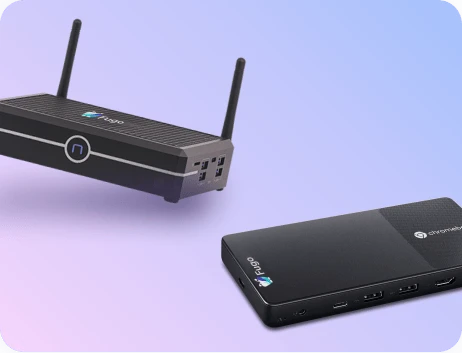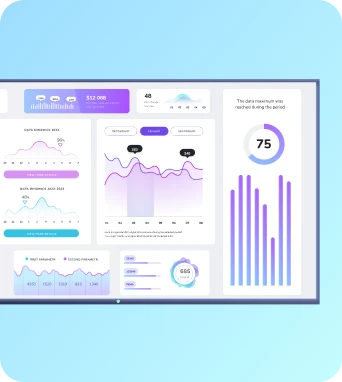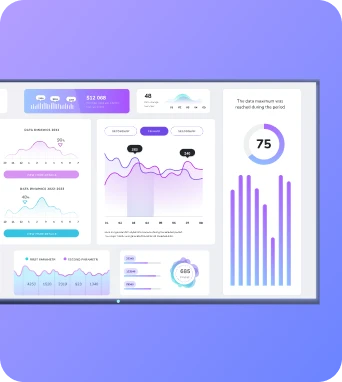BrightSign XT244
The BrightSign XT244 is a compact, industrial-grade digital signage media player engineered for enterprise and retail deployments. It supports H.265 hardware decoding, 4K output, multi-zone layouts, GPIO control and comprehensive network management. Designed for reliability, it integrates with content platforms like Fugo for remote control and scheduling.
BrightSign XT244
Hardware and performance
The XT244 is built around a purpose-designed SoC that supports hardware H.265 (HEVC) decoding, enabling efficient 4K60 output with low system load. That decoding capability is central to reliably delivering high-resolution video content, animated dashboards and multi-zone pages without stuttering or overheating in enclosed media player enclosures. The unit includes a set of physical interfaces—Gigabit Ethernet, dual HDMI outputs (depending on configuration), GPIO for triggers and inputs, serial ports for legacy integrations, and USB for local media or peripheral support. These ports make the player suitable for interactive kiosks, wayfinding, menu boards and operational dashboards that require sensor input or external control panels. Power and thermal design prioritise continuous operation; the XT244 is intended for 24/7 deployments and has firmware and hardware features to handle extended uptimes. From an installation perspective, the XT244’s compact chassis and mounting options simplify attaching media players behind displays or inside cabinets. Network management features support DHCP, static addressing and secure remote access through BrightSign’s management tools or third-party platforms such as Fugo. Administrators can segment players into device groups and apply staged content updates to reduce bandwidth spikes. On the security side, the device supports signed firmware and secure communications, important where displays surface operational or sensitive business metrics. For integrators, knowing the I/O layout and decoding limits is essential for planning multi-zone layouts and ensuring consistent playback across a distributed signage estate.
Software, integration and management
BrightSign devices run BrightSign OS and support BrightAuthor or BrightSign’s networked management services; however, many deployments pair the hardware with cloud signage platforms like Fugo for streamlined content authoring, scheduling and analytics. Integrating XT244 with Fugo lets operators push playlists, templates and dynamic data to devices without manual intervention. Fugo handles user permissions, grouping and staged rollouts, while the XT244 executes rendering locally for smooth playback. This separation of responsibilities—cloud-based content orchestration and local hardware rendering—reduces latency and dependence on continuous bandwidth, which is particularly useful for remote sites or high-density deployments. In practice, configuration begins with provisioning the player to the network, registering it with the chosen signage platform and assigning it to device groups. Content can include native video, images, HTML5 widgets and data-driven elements such as live dashboards or RSS feeds. The XT244’s GPIO and serial interfaces allow event-driven content changes: a button press or sensor trigger can launch a specific zone layout or play priority content. For IT teams, remote diagnostics and logging provided by management platforms minimise truck rolls. Firmware updates, system health checks and content version control are handled centrally, and role-based access controls ensure only authorised users can push critical changes. Planning for redundancy, monitoring bandwidth usage and testing mixed-content scenarios on a sample device before wide deployment are recommended best practices.
Deployment considerations and best practices
Keep the learning going...
BrightSign XD234
The BrightSign XD234 is a high-performance media player designed for professional digital signage environments. It delivers 4K H.265 video playback, multiple input and output options, and industrial-grade reliability. Suited to complex installations, the XD234 supports remote management, GPIO, serial control and is compatible with content platforms such as Fugo.ai.
BrightSign XT1144
A high-performance, 4K-capable commercial digital signage media player from BrightSign that delivers reliable HEVC playback, HTML5 support, extensive I/O and enterprise-grade network management.
Browser-based CMS
A browser-based CMS is a web-hosted content management system that lets teams create, schedule and publish digital signage content directly from any modern browser. It removes the need for local server installations, supports centralised asset libraries, access controls and real‑time updates for TV dashboards and workplace displays.



